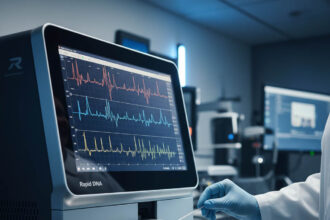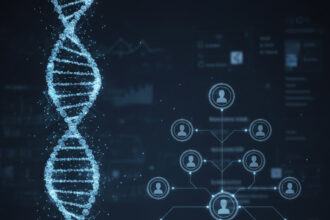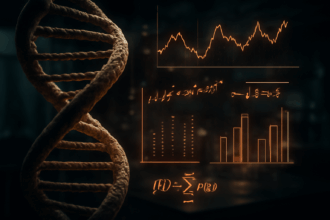The journey of DNA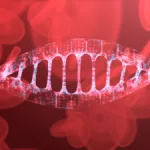 DNA, or Deoxyribonucleic Acid, is the genetic material found in cells, composed of a double helix structure. It serves as the genetic blueprint for all living organisms. Read Full Definition sequencing technologies is a testament to human ingenuity and scientific progress. From its humble beginnings in the 1970s to the cutting-edge methods of today, this field has undergone a remarkable transformation. Let’s explore this fascinating evolution, uncovering the breakthroughs that have revolutionized our understanding of genetics and opened up new frontiers in medicine, biotechnology, and beyond.
DNA, or Deoxyribonucleic Acid, is the genetic material found in cells, composed of a double helix structure. It serves as the genetic blueprint for all living organisms. Read Full Definition sequencing technologies is a testament to human ingenuity and scientific progress. From its humble beginnings in the 1970s to the cutting-edge methods of today, this field has undergone a remarkable transformation. Let’s explore this fascinating evolution, uncovering the breakthroughs that have revolutionized our understanding of genetics and opened up new frontiers in medicine, biotechnology, and beyond.
Imagine standing at the threshold of a new era in biological research. That’s precisely where scientists found themselves in the mid-20th century when the structure of DNA was first unveiled. This monumental discovery set the stage for a relentless pursuit to decode the genetic blueprint of life itself. But how does one read a moleculeA molecule is a fundamental unit of matter composed of two or more atoms that are chemically bonded together. It is the smallest possible amount of a particular substance that retains all of the unique Read Full Definition? This question sparked decades of innovation, leading to the development of increasingly sophisticated DNA sequencing technologies.
As we delve into this captivating narrative, we’ll witness the birth of first-generation sequencing methods, marvel at the leap to high-throughput technologies, and glimpse the future with emerging third-generation platforms. Each step along this path represents a technological advancement and a deepening of our comprehension of life’s fundamental code.
Are you ready to unravel the story of DNA sequencing? Let’s begin our journey through time, exploring the methods that have allowed us to peer into the very essence of biological information.
- The Dawn of DNA Sequencing: First-Generation Technologies
- The Maxam-Gilbert Method: Chemical Cleavage Pioneers
- Sanger Sequencing: The Game-Changer
- Automation and Fluorescent Labeling: Accelerating the Process
- Capillary Electrophoresis: Enhancing Resolution and Speed
- The Impact of First-Generation Sequencing
- The Rise of High-Throughput Sequencing: Second-Generation Technologies
- Parallelization: The Key to High-Throughput Sequencing
- 454 Pyrosequencing: Igniting the NGS Revolution
- Illumina/Solexa Sequencing: Dominating the NGS Landscape
- Ion Torrent: Semiconductor Sequencing
- SOLiD Sequencing: A Different Approach
- Impact and Applications of Second-Generation Sequencing
- Third-Generation Sequencing: The Future of DNA Analysis
- Single-Molecule Real-Time (SMRT) Sequencing: Pacific Biosciences
- Nanopore Sequencing: Oxford Nanopore Technologies
- Advantages and Challenges of Third-Generation Sequencing
- The Impact of Third-Generation Sequencing
- The Future of DNA Sequencing: Emerging Technologies and Applications
- Quantum Sequencing: The Next Frontier?
- In Situ Sequencing: Reading DNA in Its Cellular Context
- Sequencing Through Electron Microscopy
- Microfluidics and Lab-on-a-Chip Technologies
- Artificial Intelligence and Machine Learning in Sequencing
- Potential Applications and Impacts
- Ethical Considerations and Challenges
- Conclusion: The Ongoing Revolution in DNA Sequencing
The Dawn of DNA Sequencing: First-Generation Technologies
The 1970s marked a pivotal moment in the history of molecular biology. Scientists, armed with the knowledge of DNA’s structure, faced a daunting challenge: how to determine the precise"Precise" refers to the degree of closeness or consistency between multiple measurements or values taken under the same conditions. It indicates how well these measurements agree with each other, regardless of whether they are accurate Read Full Definition order of nucleotides within a DNA molecule. This quest gave birth to the first generation of DNA sequencing technologies, setting the stage for a revolution in genetic research.
The Maxam-Gilbert Method: Chemical Cleavage Pioneers
In 1977, Allan Maxam and Walter Gilbert introduced a groundbreaking approach to DNA sequencing. Their method, known as chemical cleavage sequencing, involved a series of chemical reactions to break DNA at specific bases. By using different chemicals to cleave the DNA at different nucleotides, they could create a ladder of DNA fragments. When separated by size using gel electrophoresis, these fragments revealed the sequence of the original DNA molecule.
The Maxam-Gilbert method was a true innovation, offering researchers their first real tool for reading DNA sequences. However, it came with significant drawbacks. The use of hazardous chemicals and the labor-intensive nature of the process limited its widespread adoption. Despite these challenges, the method played a crucial role in early genetic studies and paved the way for future advancements.
Sanger Sequencing: The Game-Changer
In the same year that Maxam and Gilbert published their method, Frederick Sanger and his colleagues introduced an alternative approach that would soon become the gold standard in DNA sequencing. The Sanger method, also known as the chain-termination method, revolutionized the field with its elegance and efficiency.
Sanger’s technique utilized DNA polymerase, the enzyme responsible for DNA replication, along with modified nucleotides called dideoxynucleotides (ddNTPs). These ddNTPs lack the hydroxyl group necessary for DNA chain extension, causing the DNA synthesis to terminate whenever they are incorporated. By running four separate reactions, each with a different ddNTP, researchers could generate DNA fragments of varying lengths, each ending with a specific base.
The genius of Sanger sequencing lay in its ability to produce a clear, readable pattern when the fragments were separated by size. This method allowed scientists to decipher DNA sequences up to several hundred base pairs in length, a significant improvement over previous techniques.
Automation and Fluorescent Labeling: Accelerating the Process
As the demand for DNA sequencing grew, researchers sought ways to streamline and automate the Sanger method. The introduction of fluorescent labeling in the 1980s marked a significant leap forward. By attaching fluorescent dyes to the ddNTPs, scientists could perform all four reactions in a single tube and detect the fragments using automated machines.
This advancement led to the development of the first automated DNA sequencers, dramatically increasing the speed and efficiency of sequencing projects. The Applied Biosystems ABI 370A, introduced in 1987, was among the pioneering automated sequencers that transformed DNA sequencing from a laborious manual process to a high-throughput operation.
Capillary Electrophoresis: Enhancing Resolution and Speed
The next major improvement in first-generation sequencing came with the introduction of capillary electrophoresis in the 1990s. This technique replaced the traditional slab gels with thin glass capillaries filled with a polymer matrix. Capillary electrophoresis offered several advantages:
- Improved resolution, allowing for longer read lengths
- Faster separation of DNA fragments
- The ability to run multiple samples simultaneously
Machines like the ABI PRISM 3700, which utilized 96 capillaries in parallel, became workhorses in sequencing labs worldwide. These advancements were crucial in enabling large-scale sequencing projects, including the Human Genome Project.
The Impact of First-Generation Sequencing
The development of first-generation sequencing technologies, particularly Sanger sequencing, had a profound impact on biological research. These methods enabled scientists to:
- Sequence entire genes
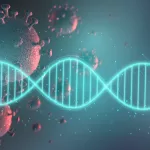 Genes are DNA segments (or RNA in some viruses) that dictate cellular processes, traits, and hereditary information, promoting genetic diversity and evolution in living organisms. Read Full Definition and small genomes
Genes are DNA segments (or RNA in some viruses) that dictate cellular processes, traits, and hereditary information, promoting genetic diversity and evolution in living organisms. Read Full Definition and small genomes - Identify genetic mutations associated with diseases
- Study evolutionary relationships between species
- Develop new tools for genetic engineering and biotechnology
However, as researchers set their sights on more ambitious projects, such as sequencing entire human genomes, the limitations of first-generation technologies became apparent. The cost and time required for large-scale sequencing projects were prohibitive, setting the stage for the next revolution in DNA sequencing technology.
The Rise of High-Throughput Sequencing: Second-Generation Technologies
As the new millennium dawned, the scientific community found itself at a crossroads. The Human Genome Project, completed in 2003 using first-generation sequencing methods, had demonstrated both the power and limitations of existing technologies. The need for faster, more cost-effective sequencing methods was clear, setting the stage for the next wave of innovation: second-generation or next-generation sequencing (NGS) technologies.
Parallelization: The Key to High-Throughput Sequencing
The fundamental breakthrough of second-generation sequencing lies in its ability to parallelize the sequencing process. Instead of sequencing a single DNA fragment at a time, these new methods could simultaneously sequence millions of DNA fragments. This massive parallelization dramatically increased the output while significantly reducing the cost per base sequenced.
454 Pyrosequencing: Igniting the NGS Revolution
In 2005, 454 Life Sciences (later acquired by Roche) introduced the first commercially successful NGS platform. The 454 system utilized a technique called pyrosequencing, which detects the release of pyrophosphate during DNA synthesis. Here’s how it worked:
- DNA fragments are attached to beads, with one fragment per bead.
- The beads are emulsified in oil droplets containing PCR reagents, allowing each fragment to be amplified into millions of copies.
- The beads are deposited into wells on a picotiter plate.
- Nucleotides are flowed over the plate sequentially, and when incorporated, they release pyrophosphate.
- This pyrophosphate is converted to light through a series of enzymatic reactions.
- A camera detects the light signals, indicating which nucleotides were incorporated at each position.
The 454 system could produce read lengths of 400-500 base pairs, significantly longer than other NGS methods that followed. This technology played a crucial role in early metagenomics studies and was used to sequence the first individual human genome in 2007.
Illumina/Solexa Sequencing: Dominating the NGS Landscape
While 454 pyrosequencing blazed the trail, it was the sequencing-by-synthesis approach developed by Solexa (later acquired by Illumina) that would come to dominate the NGS market. The Illumina method involves:
- Fragmenting DNA and attaching adapters to both ends.
- These fragments bind to a flow cell covered with complementary adapter sequences.
- Each bound fragment is amplified through bridge amplification, creating clusters of identical sequences.
- Sequencing occurs through cycles of adding fluorescently labeled nucleotides, imaging, and cleaving the fluorescent dyes.
Illumina’s technology offered several advantages:
- Higher throughput than 454 sequencing
- Lower per-base cost
- Ability to perform paired-end sequencing, improving accuracyIn scientific and measurement contexts, "accuracy" refers to the degree of proximity or closeness between a measured value and the true or actual value of the measured quantity. Accuracy indicates how well a measurement reflects Read Full Definition in genome assembly and variant detection
The flexibility and cost-effectiveness of Illumina sequencing have made it the most widely used NGS platform, powering everything from whole-genome sequencing projects to targeted gene panels for clinical diagnostics.
Ion Torrent: Semiconductor Sequencing
Another innovative approach to NGS came from IonAn ion is a type of chemical species that results from the unequal number of electrons and protons in an atom or molecule. This imbalance in charge gives ions an electric charge, either positive or Read Full Definition Torrent (acquired by Life Technologies, now part of Thermo Fisher Scientific). The Ion Torrent technology uses semiconductor sequencing, detecting pH changes caused by the release of hydrogen ions during DNA synthesis.
Key features of Ion Torrent sequencing include:
- No need for optical detection, reducing instrument size and cost
- Rapid sequencing runs, with results available in hours rather than days
- Scalability, with chips of varying capacities to suit different project sizes
While not achieving the market dominance of Illumina, Ion Torrent systems have found niches in clinical applications and smaller-scale research projects.
SOLiD Sequencing: A Different Approach
The SOLiD (Sequencing by Oligonucleotide Ligation and Detection) system, developed by Applied Biosystems (now part of Thermo Fisher Scientific), took a different approach to NGS. Instead of sequencing by synthesis, SOLiD used a method based on ligation:
- Short DNA fragments are attached to beads and amplified through emulsion PCR.
- A primer is hybridized to the adapter sequence on the DNA.
- Fluorescently labeled di-base probes compete for ligation to the primer.
- The color of the ligated probe is recorded, and the fluorescent tag is cleaved off.
- The process is repeated, building up the sequence two bases at a time.
SOLiD sequencing offered high accuracy due to its two-base encoding system, where each base is effectively sequenced twice. However, its shorter read lengths and more complex data analysisBig Data Analytics is the process of examining extremely large and complex datasets to uncover hidden patterns and insights. In forensics, it's used to analyze massive amounts of information to investigate fraud, cybercrime, and other Read Full Definition limited its adoption compared to other NGS platforms.
Impact and Applications of Second-Generation Sequencing
The advent of NGS technologies transformed genomics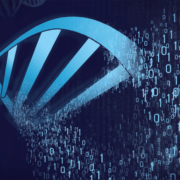
- Whole Genome Sequencing: NGS made it feasible to sequence entire genomes of complex organisms quickly and affordably.
- Transcriptomics: RNA-Seq techniques allowed researchers to study gene expression patterns across entire transcriptomes.
- Epigenomics: Methods like ChIP-Seq and bisulfite sequencing enabled genome-wide studies of DNA-protein interactions and DNA methylation
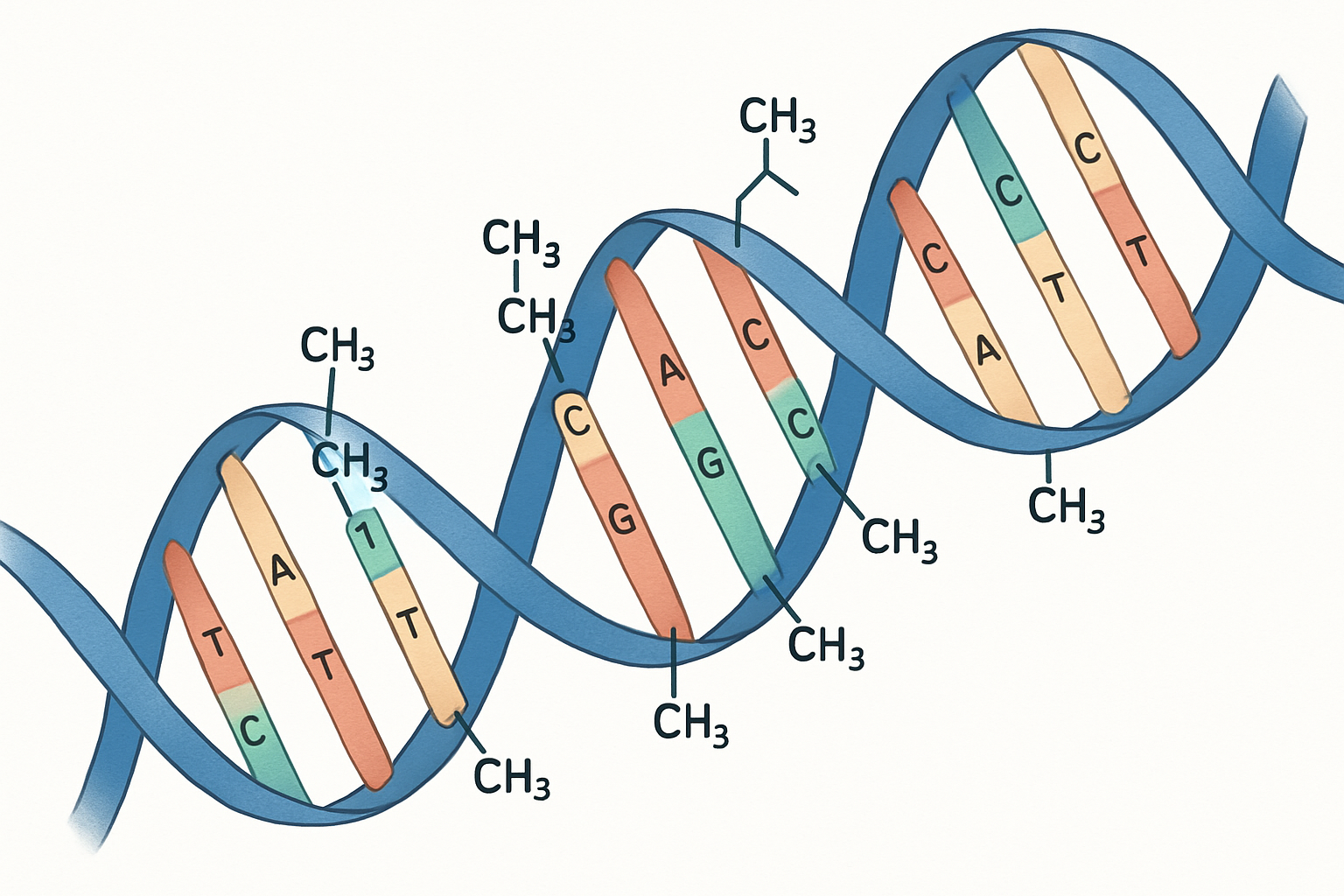
- Metagenomics: NGS facilitated the study of microbial communities in various environments, revolutionizing our understanding of microbiomes.
- Clinical Diagnostics: NGS-based tests have been developed for cancer profiling, non-invasive prenatal testing, and rare disease diagnosis.
The dramatic decrease in sequencing costs brought about by NGS technologies has democratized genomics research, allowing smaller labs to undertake projects that were once the domain of large, well-funded institutions. This has accelerated the pace of discovery across many fields of biology and medicine.
Third-Generation Sequencing: The Future of DNA Analysis
As second-generation sequencing technologies matured and became widespread, researchers began to envision even more advanced methods for DNA analysis. These new approaches, collectively known as third-generation sequencing, promised longer read lengths, real-time sequencing, and the ability to sequence single DNA molecules without amplification. Let’s explore the cutting-edge technologies that are shaping the future of DNA sequencing.
Single-Molecule Real-Time (SMRT) Sequencing: Pacific Biosciences
Pacific Biosciences (PacBio) introduced SMRT sequencing in 2011, marking a significant departure from previous technologies. The key features of SMRT sequencing include:
- Long Read Lengths: SMRT can produce read lengths averaging 10-20 kilobases, with some reads exceeding 100 kilobases.
- Single-Molecule Sequencing: No amplification step is required, reducing PCR biasThe difference between the expectation of the test results and an accepted reference value. Read Full Definition and allowing for the detection of base modifications.
- Real-Time Sequencing: The incorporation of nucleotides is observed in real-time, providing kinetic information that can be used to detect DNA modifications.
How SMRT Sequencing Works:
- DNA polymerase molecules are immobilized at the bottom of tiny wells called zero-mode waveguides (ZMWs).
- Each ZMW is illuminated from below, creating a detection volume so small that only the fluorescence from a single nucleotide incorporation event is detected.
- As the polymerase incorporates fluorescently labeled nucleotides, the color and duration of the fluorescent pulses are recorded.
Applications of SMRT Sequencing:
- De novo genome assembly, especially for complex genomes with repetitive regions
- Detection of structural variants and haplotype phasing
- Characterization of DNA modifications such as methylation
- Full-length isoform sequencing in transcriptomics studies
Nanopore Sequencing: Oxford Nanopore Technologies
Perhaps the most radical departure from traditional sequencing methods, nanopore sequencing directly reads the sequence of DNA molecules as they pass through tiny pores. Oxford Nanopore Technologies (ONT) has been at the forefront of commercializing this technology.
Key Features of Nanopore Sequencing:
- Ultra-Long Reads: Nanopore sequencing can produce extremely long reads, limited only by the length of the DNA molecule itself.
- Real-Time Sequencing: Data
 Information in analog or digital form that can be transmitted or processed. Read Full Definition is available for analysis as soon as the molecule begins passing through the pore.
Information in analog or digital form that can be transmitted or processed. Read Full Definition is available for analysis as soon as the molecule begins passing through the pore. - Portability: ONT’s MinION device is a pocket-sized sequencer, enabling on-site sequencing in remote locations.
- Direct RNA Sequencing: Nanopore technology can sequence RNA molecules directly, without conversion to cDNA.
How Nanopore Sequencing Works:
- A protein nanopore is embedded in an electrically resistant membrane.
- An ionic current is passed through the nanopore by setting a voltage across the membrane.
- As a DNA molecule passes through the pore, it causes characteristic disruptions in the current.
- These current changes are used to identify the sequence of bases in the DNA molecule.
Applications of Nanopore Sequencing:
- Rapid pathogen identification and outbreak surveillance
- On-site environmental DNA monitoring
- Structural variant detection in cancer genomics
- Direct detection of RNA modifications in transcriptomics studies
Advantages and Challenges of Third-Generation Sequencing
Advantages:
- Long Read Lengths: Crucial for resolving complex genomic regions and improving de novo assembly.
- Direct Detection of Base Modifications: Enables epigenetic studies without additional sample preparation.
- Real-Time Data: Allows for adaptive sampling and rapid analysis in time-sensitive situations.
- Reduced Bias: Single-molecule sequencing eliminates PCR amplification bias.
Challenges:
- Higher Error Rates: Both SMRT and nanopore sequencing currently have higher error rates than short-read technologies.
- Lower Throughput: While read lengths are longer, the overall throughput is generally lower than second-generation platforms.
- Data Analysis: New bioinformatics tools and approaches are needed to fully leverage the unique data produced by these technologies.
The Impact of Third-Generation Sequencing
Third-generation sequencing technologies are reshaping our approach to genomics and transcriptomics:
- Completing the Human Genome: Long-read technologies have been crucial in filling gaps in the human genome reference, including highly repetitive regions.
- Cancer Genomics: The ability to detect complex structural variants and phase haplotypes is advancing our understanding of cancer genomes.
- Microbial Genomics: Long reads are improving our ability to assemble complete bacterial genomes from complex environmental samples.
- Transcriptomics: Full-length isoform sequencing is revealing the complexity of alternative splicing in eukaryotes.
- Portable Sequencing: The ability to sequence DNA and RNA in the field is transforming areas like epidemic surveillance and environmental monitoring.
As these technologies continue to mature, we can expect to see further improvements in accuracy, throughput, and cost-effectiveness. The integration of long-read and short-read technologies is likely to become increasingly common, combining the strengths of both approaches to provide comprehensive genomic and transcriptomic analyses.
The Future of DNA Sequencing: Emerging Technologies and Applications
As we stand on the cusp of a new era in genomics, it’s clear that the field of DNA sequencing is far from stagnant. Researchers and companies around the world are continuously pushing the boundaries of what’s possible, developing new technologies and refining existing ones. Let’s explore some of the emerging trends and potential future directions in DNA sequencing.
Quantum Sequencing: The Next Frontier?
One of the most intriguing possibilities for future DNA sequencing technologies lies in the realm of quantum mechanics. Quantum sequencing could potentially offer unprecedented speed and accuracy:
- Quantum tunneling techniques might allow for direct electron microscopy of DNA bases.
- Quantum sensors could detect minute changes in electrical or magnetic fields associated with different DNA bases.
While still largely theoretical, quantum sequencing represents the cutting edge of sequencing technology research.
In Situ Sequencing: Reading DNA in Its Cellular Context
In situ sequencing aims to determine the sequence of DNA or RNA molecules within their native cellular environment. This approach could revolutionize our understanding of spatial gene expression and cellular heterogeneity:
- Fluorescence in situ sequencing (FISSEQ) allows for sequencing RNA directly in fixed cells or tissues.
- Spatial transcriptomics techniques combine in situ sequencing with spatial resolution, mapping gene expression to specific locations within a tissue.
These methods could provide crucial insights into developmental biology, neuroscience, and cancer research.
Sequencing Through Electron Microscopy
Advances in electron microscopy have opened up the possibility of directly visualizing DNA sequences:
- Transmission electron microscopy (TEM) has been used to image individual DNA bases.
- Scanning tunneling microscopy (STM) offers the potential for atomic-resolution imaging of DNA.
While currently limited by technical challenges, these approaches could potentially offer single-molecule sequencing with unparalleled accuracy.
Microfluidics and Lab-on-a-Chip Technologies
The integration of sequencing technologies with microfluidic systems promises to further miniaturize and streamline DNA analysis:
- Droplet microfluidics allows for the manipulation of tiny volumes of reagents, potentially reducing costs and increasing throughput.
- Lab-on-a-chip devices could integrate sample preparation, amplification, and sequencing into a single, compact system.
These technologies could make DNA sequencing more accessible for point-of-care diagnostics and field research.
Artificial Intelligence and Machine Learning in Sequencing
As sequencing technologies generate ever-larger datasets, artificial intelligence (AI) and machine learning (ML) are becoming increasingly important:
- AI algorithms can improve base calling accuracy and help interpret complex sequencing data.
- Machine learning models can predict functional effects of genetic variants, aiding in the interpretation of genomic data.
- Deep learning approaches are being developed to improve de novo genome assembly and variant calling.
The integration of AI and ML with sequencing technologies is likely to accelerate discoveries in genomics and personalized medicine.
Potential Applications and Impacts
The continued evolution of DNA sequencing technologies is set to transform numerous fields:
- Personalized Medicine: More comprehensive and affordable genome sequencing could make individualized treatment plans based on genetic profiles a routine part of healthcare.
- Cancer Diagnostics and Treatment: Improved detection of rare tumor cells and circulating tumor DNA could enable earlier diagnosis and more targeted therapies.
- Microbiome Research: Advanced sequencing techniques could provide deeper insights into the complex interactions within microbial communities, impacting fields from ecology to human health.
- Synthetic Biology: Faster and more accurate sequencing will facilitate the design and verification of synthetic genetic constructs, accelerating progress in biotechnology and bioengineering.
- Environmental Monitoring: Portable, real-time sequencing technologies could revolutionize the monitoring of biodiversity and the detection of environmental pathogens.
- Forensics: Advanced sequencing methods could provide more detailed genetic profiles from trace amounts of DNA, potentially revolutionizing forensic investigations.
- Agriculture: Improved genomic tools could accelerate crop breeding programs and help in the development of more resilient and productive plant varieties.
Ethical Considerations and Challenges
As DNA sequencing becomes more powerful and ubiquitous, it’s crucial to address the ethical implications:
- Privacy concerns: How do we protect genetic information in an era of widespread sequencing?
- Equity issues: How can we ensure that the benefits of advanced sequencing technologies are accessible to all?
- Interpretational challenges: As we generate more genetic data, how do we ensure accurate interpretation and avoid misuse?
Addressing these challenges will require collaboration between scientists, ethicists, policymakers, and the public.
Conclusion: The Ongoing Revolution in DNA Sequencing
The journey from Sanger sequencing to today’s cutting-edge technologies represents one of the most remarkable scientific revolutions of our time. Each generation of sequencing technology has brought new insights and opened up new possibilities for research and application.
As we look to the future, it’s clear that DNA sequencing will continue to evolve, becoming faster, more accurate, and more accessible. The integration of sequencing with other technologies – from microfluidics to artificial intelligence – promises to unlock even greater potential.
The impact of these advancements will be felt across numerous fields, from healthcare to environmental science, forensics to agriculture. As our ability to read and interpret the genetic code improves, so too does our understanding of life itself.
Yet with great power comes great responsibility. As we stand on the brink of a new era in genomics, it’s crucial that we navigate the ethical challenges thoughtfully and ensure that the benefits of these technologies are shared equitably.
The story of DNA sequencing is far from over. Each new chapter brings exciting discoveries and unforeseen challenges. As we continue to push the boundaries of what’s possible, one thing is certain: the field of DNA sequencing will remain at the forefront of scientific innovation, driving progress and shaping our understanding of the world around us.






